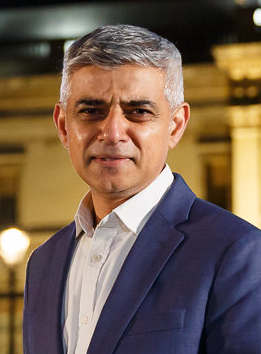
The Mayor of London, Sadiq Khan, has criticised the Government for its poor housing delivery, as new analysis shows London has outbuilt the rest of the country since he took office in 2016.
If the rest of England had been adding new homes at the same rate as London since then, there would be 300,000 more homes across the country today.
The latest official data, up to the end of March 2022, reveals that London has increased its housing stock by eight percent during the years in which Sadiq has been Mayor. Taking 2015 as the base year and calculating additions to the housing stock from 2016 to 2022, the number of homes in London increased from 3,474,000 to 3,753,000. In the rest of England combined, that figure increased from 20,093,000 to 21,407,000. Had the stock in the rest of England outside London grown at the same 8% rate as London since 2016, there would now be 21,708,000 homes in England’s eight other regions – a 300,000 increase, equivalent to the Government’s housing target for an entire year.
Housing completions in London in recent years are at the highest level since the 1930s, with the highest council homebuilding since the 1970s. Earlier this year, Sadiq celebrated meeting the hugely ambitious affordable homebuilding target of starting 116,000 homes - set under the Government’s 2016-23 Affordable Homes Programme, by March 2023 – while Ministers missed their own target by nearly 6,500.
However, the Mayor has warned that there still remains a significant shortage of housing in the capital - particularly of social and genuinely affordable homes - and has called for unallocated funding to be given to London to spend.
The Mayor of London, Sadiq Khan, said: “I’ve made tackling London’s housing crisis a priority since the day I took office. We have got London building again, with this analysis showing that our hard work has sent home building in the capital charging ahead of the rest of the country – and were it not for the inaction of Ministers, there would be an extra 300,000 much-needed homes across the rest of England today.
“There is still a long way to go to fix the housing crisis in London and the Government is putting our progress at risk by rowing back on targets. Experts are warning that country-wide housebuilding has fallen to the lowest level since World War II. I’m using every power at my disposal to build a better, fairer and more prosperous city for all Londoners, but if Ministers don’t invest the funding required into London and beyond, progress across the whole country could grind to a halt.”
G15 Chair, Fiona Fletcher-Smith, said: “G15 members are the largest providers of affordable new homes in London, and we are committed to building more desperately needed homes for the capital.
“However, housing associations are facing very tough decisions in the face of high interest rates, cost inflation, supply chain issues and labour shortages. We are also impacted by low consumer confidence around buying new homes, because we rely on sales income to cross-subsidise our social mission. We are prioritising investment in the safety and quality of existing homes and services – G15 members invest more than £1 billion each year - but this means we have had to slow down the development of new housing.
“London and the rest of the country is facing an unprecedented housing crisis, and we will only solve it by getting the sector building again. We need long-term thinking, certainty and political commitment, and strongly urge Government to consider and implement the recommendations set out by the London Housing Delivery Taskforce.”
Housing experts have warned of a major decline in housebuilding across the country, driven by high interest rates, building cost inflation and a lack of leadership from the Government. Last week, having re-convened the ‘London Housing Delivery Taskforce’ with London Councils in August and September, the Mayor and leaders from across London’s housebuilding sector delivered a new blueprint for action on housebuilding to boost the supply of new homes.
The blueprint included 29 recommendations for the Government to ensure the long-term viability of the capital’s housebuilding sector – with measures including boosting council homebuilding, scrapping the proposed new ‘Infrastructure Levy’ and removing the uncertainty caused by a lack of clarity on fire safety rules around second staircases on taller buildings, which are holding up developments. Photo by Chabad Lubavitch, Wikimedia commons.


































